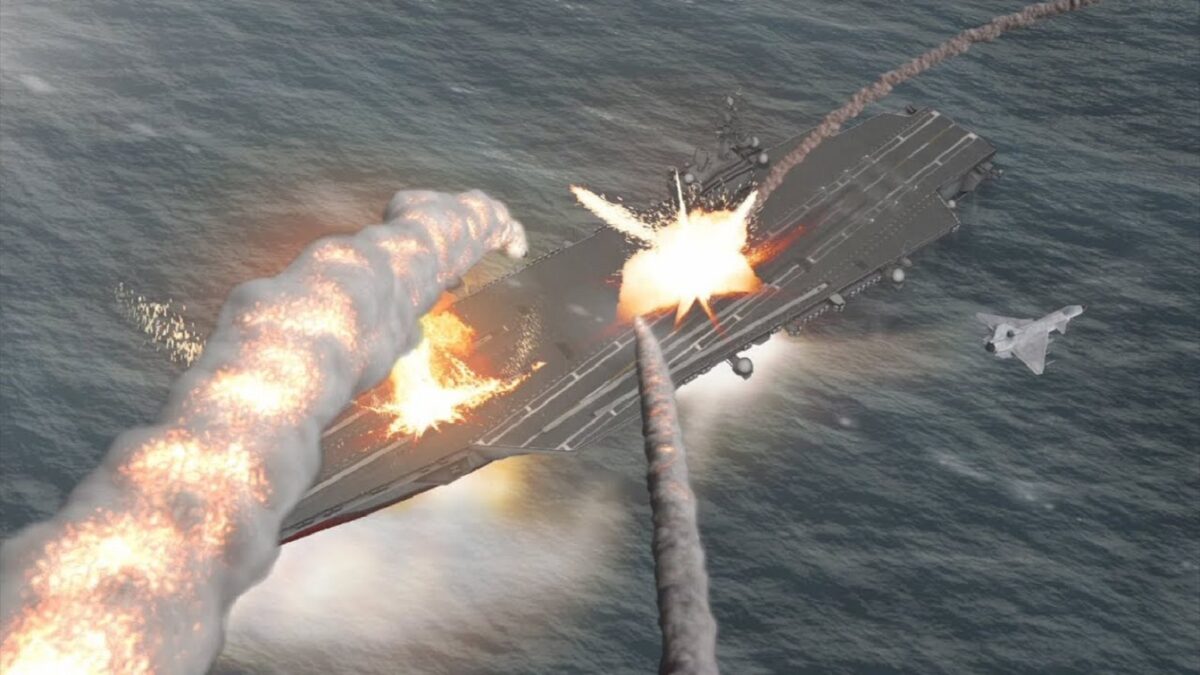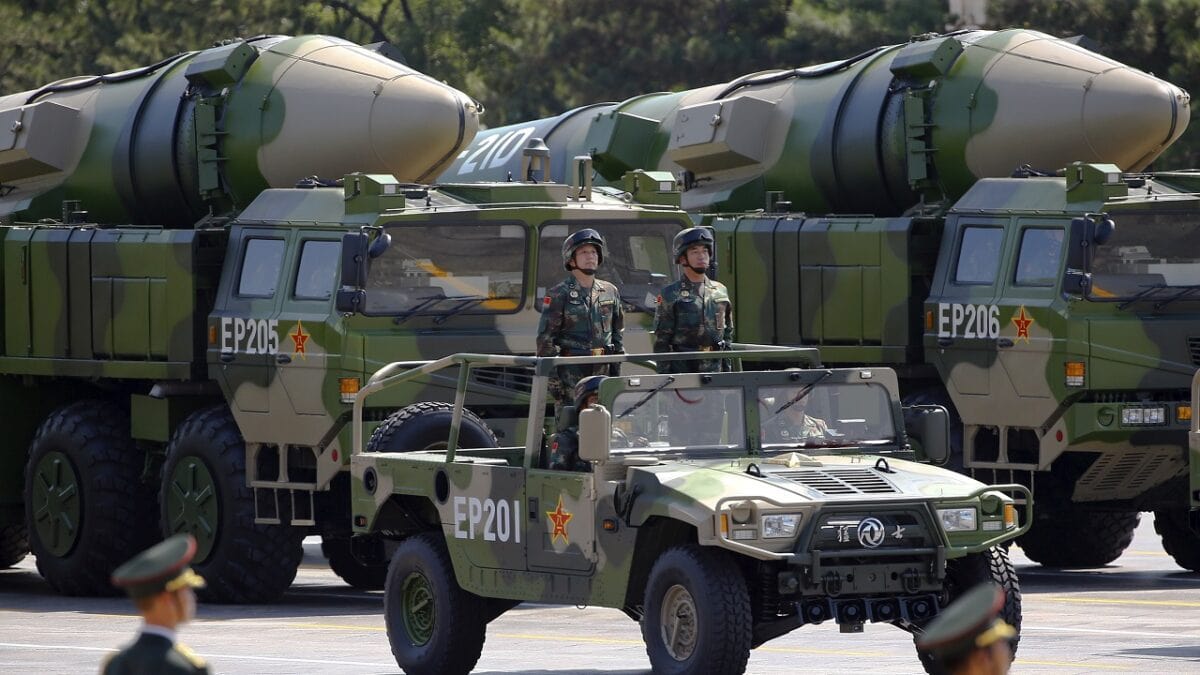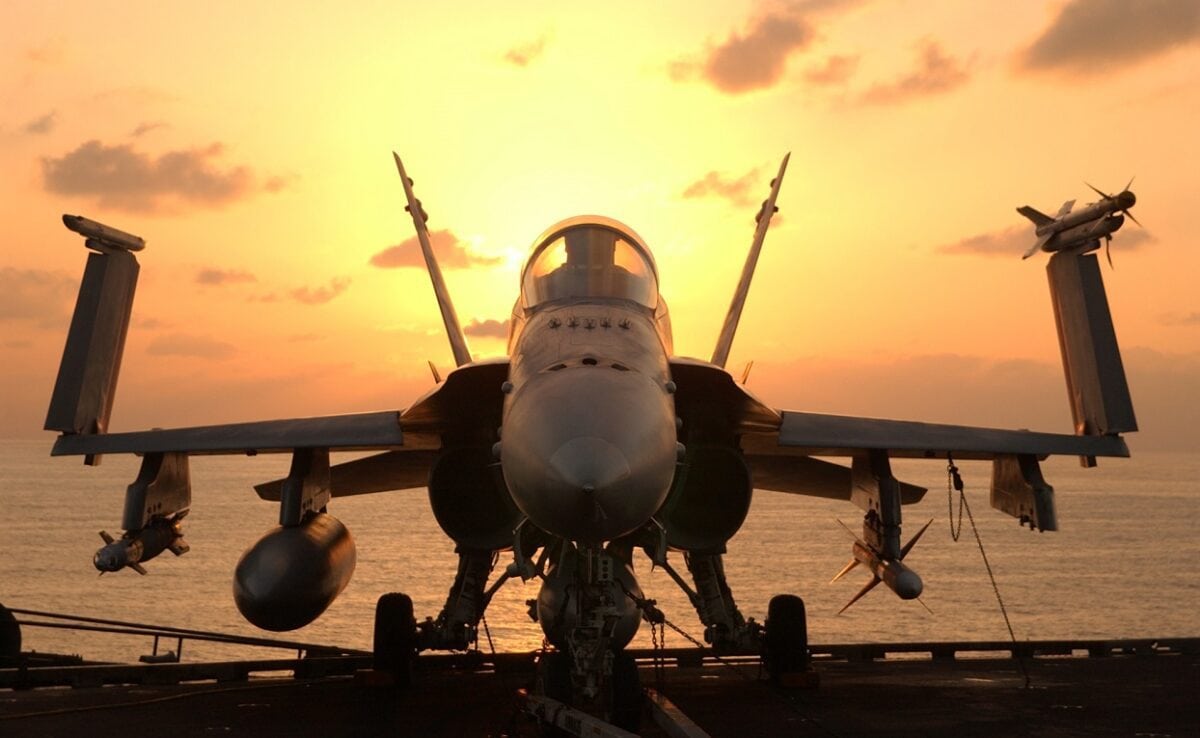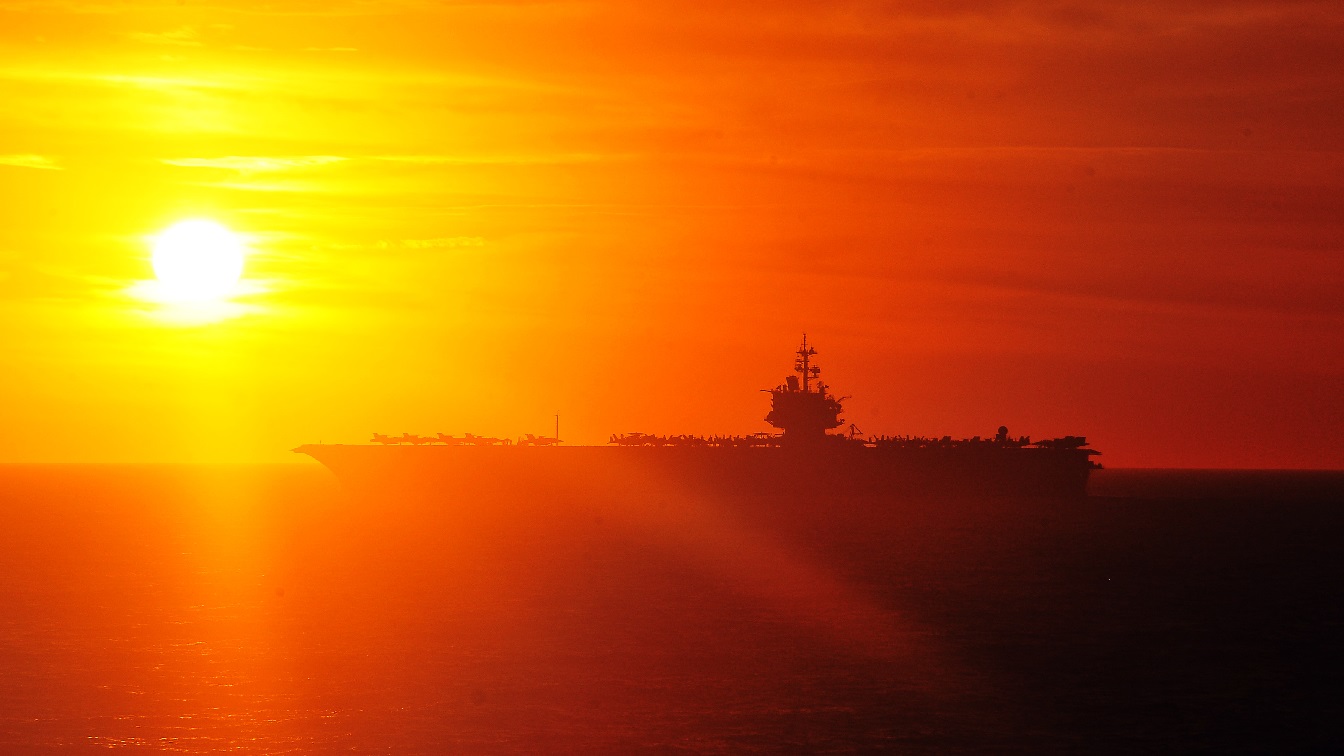Taipei on Saturday warned that significant Chinese military drills in the seas around Taiwan and in the air over the island represented a simulation of an attack. On Monday, China announced that it was extending the maneuvers, with the semi-official communist mouthpiece Global Times claiming the expanded drills “will not stop and are expected to become routine until reunification.”
It is time for a blunt, stone-cold sober reality check for Washington. Continuing to base U.S./China policies on the arrogant assumption that we can simply impose our will on Beijing while ignoring realities on the ground will unnecessarily and avoidably raise the risk of war in the Taiwan Straits area.
The first round of PLA military exercises in and around Taiwan concluded on Sunday, but the crisis sparked when U.S. Speaker of the House Rep. Nancy Pelosi made an official trip to Taiwan last week is far from over. Without immediate and sustained remedial action, Pelosi’s visit may well prove to have been the spark that lit the fuse for the explosion of war between China and Taiwan. Without deft diplomacy from Washington, that war could all too easily suck the United States into that no-win war.
Given foreign and military policies coming out of Washington over the past couple of decades, there is an uncomfortably high chance this situation could deteriorate into war – and that would be catastrophic for American interests. It should go without saying that a conflict between two nuclear-armed superpowers could all too easily devolve into an atomic confrontation – which could result in the literal destruction of both countries. But even if a battle were limited to conventional arms, choosing to fight China over Taiwan would represent an alarmingly high risk to our national security.
To better understand why the U.S. would be at a marked disadvantage conventionally, in any China-Taiwan war scenario, let us briefly consider how China would likely start such a conflict. What they almost certainly will not do, is move to attack in the current environment. Beijing highly prioritizes deception and strategic surprise in its war-making doctrine.
At the moment, every Chinese military move related to Taiwan is heavily covered in the Western media, and Taiwanese forces are on high alert. Should the Chinese communist leaders eventually order an attack, the PLA will likely wait until this current moment of heightened tensions cools and scrutiny of China’s military fades. But Chinese President Xi Jinping has provided clues as to what China may do.
In this current crisis, in his July 28 phone call with Biden, Xi said that “China’s national sovereignty and territorial integrity is the firm will of the more than 1.4 billion Chinese people,” and that if Pelosi makes her visit, Xi emphasized, the U.S. should be careful because “(t)hose who play with fire will perish by it.” In the aftermath of the Speaker’s visit, China made good on Xi’s warning, conducting unprecedented military exercises and live-fire missile drills close to Taiwan’s shores. Perhaps of greater concern, however, is what Xi has previously said.
In a major speech last October, Xi flatly stated the “historical task of the complete reunification of the motherland (with Taiwan) must be fulfilled, and will definitely be fulfilled.” It has long been known that China would use force if Taiwan ever directly declared independence, but their 2005 “anti-Session Law” adds another, more ambiguous justification: “(if the) possibilities for a peaceful reunification should be completely exhausted, the state shall employ non-peaceful means” to enforce unification. Only the most senior communist party officials – led by Xi – have the power to decide when those possibilities have been irrevocably exhausted.
It may well be that Xi has concluded that Pelosi’s trip – and Taiwanese President Tsai Ing-wen, acting as a willing host – has signaled that Taiwan will never unify. Thus, a fuse may have been lit by this visit that will result, at a time of China’s choosing, in a move by Xi to take Taiwan by force. Here’s what that could mean for the U.S.
Improved Chinese Defenses
In the aftermath of the 1995 Taiwan Straits crisis in which then-President Bill Clinton effectively shut down aggressive Chinese moves against Taiwan by sailing two aircraft carrier groups through the straits – at the time China didn’t have sufficient power to contest the battle groups – China began a multi-decade process to create a lethal challenge to any future naval incursion near its waters. In the west, the strategy is known as anti-access, area denial (A2/AD).
The Pentagon describes China’s A2/AD strategy as designed to “dissuade, deter, or, if ordered, defeat third-party intervention” – primarily meaning the United States. The PLA plans to deter or defeat U.S. Forces by a combination of multiple and overlapping military capabilities. These defenses include shore-based missile sites, mobile launchers, air-launched missiles, aircraft carriers, land-based fighters and bombers, significant numbers of major surface combatants, submarines, sea mines, long-range artillery, and other offensive and defensive measures.
Key among these new capacities are the Chinese ability to sink our ships and shoot down U.S. aircraft. China has fielded several ballistic missiles designed to destroy even the largest U.S. ships, often referred to as “carrier-killer” missiles, such as the DF-21D and DF-26B. Though the U.S. Navy is working diligently to provide countermeasures to defeat these missiles, the history of war often exposes that it’s a lot easier to destroy a target than it is to defend one.

YouTube Screenshot of a Simulation of China Firing a DF-21 ASBM.

Military vehicles carrying DF-21D ballistic missiles roll to Tiananmen Square during a military parade to mark the 70th anniversary of the end of World War Two, in Beijing, China, September 3, 2015. REUTERS/Damir Sagolj
The defensive technology has never been tested by an American warship under combat conditions. If China uses “swarm tactics” and saturates our large ships with multiple missiles, it seems probable that some will get through. Russia’s Black Sea Fleet flagship, the Moskva, was apparently sunk in April by two Neptune missiles. The circumstances of the sinking remain shrouded in mystery, but it seems likely Russia’s flagship would have had the best missile-defense capacity of any of its vessels, yet apparently, a single barrage of missiles got through and sank it. We can be sure that China would employ far more than a single volley and will definitely launch more capable and sophisticated missiles against our Navy.
China’s newest QW-12 anti-air missile system appears to be one of the most modern and capable mobile air defense systems in the world. Alongside its HQ-17AE, China may have better air defenses than any opponent the U.S. Air Force has ever faced. American fighter pilots have not faced any real anti-air systems since the Vietnam War. It is uncertain how effectively our air defense systems will protect our pilots, but it seems likely that some would be shot down in a major war with China.
Tactical Challenges for U.S. Navy and Air Force in a U.S.-China War
The F/A-18 Super Hornet fighters that launch from American carriers only carry enough fuel to attack targets a maximum of 500 miles from the ship. China’s DF26-B ‘carrier killer’ missile, however, has a max range of almost 2,500 miles (4,000km). Meaning, long before U.S. ships would even get in range to launch fighters to help Taiwan, they could be attacked and destroyed. If somehow the carrier defeated every missile China fired against it, the U.S. ships would still face an array of enemy surface combatants, submarines, land-based missiles, and potentially sea mines. Moreover, if any jets were launched, they would face Chinese fighters, land-based anti-air missiles, and the mobile QW-12 ADA system. Yet even these major threats may not be the biggest hurdles for American intervention.
If China decides to seize Taiwan by force, they will almost certainly strike at a time that takes the defenders and U.S. military by surprise. That will mean that the entire U.S. Armed Forces will be in the same peacetime configuration it is in at this very moment. China, on the other hand, will have covertly prepared for the surprise attack, will have sufficient stocks of weapons, fuel, and ammunition hidden from view, and be mentally prepared to engage in combat operations. This disparity in preparation and the advantage that would give to China is difficult to overstate.
Logistical Challenges
When the U.S. military fought in 1991’s Desert Storm, it took almost six months to build up the combat power and ship the tanks, ships, and aircraft to the Persian Gulf, along with all the men, fuel, ammunition, and all other logistical support. The Pentagon took at least six months to prepare for Operation Iraqi Freedom in 2003. Assuming China succeeds in initiating its attack with little to no advance warning, no American unit will be prepared for combat.
U.S. fleets could physically sail from various bases to Taiwan in a matter of two or three weeks, but without months of preparation first, they could fight at most a week or two with the peacetime provisions normally stored abord each ship. The Pentagon would have to amass tons of ammunition, thousands of missiles, massive quantities of fuel for ships and planes, every combat unit would have to be brought up to 100 percent manning, and plans would have to be activated that would allow the military to sustain combat operations for months.
I cannot stress enough how Herculean the task would be to prepare for a war with China from a standing start. Yet none of the stages of preparation could be bypassed. To hurry into a war, thousands of miles away, to fight a fully-prepared and fully-stocked enemy, would be to rush to near-certain defeat. The ramifications are sobering and clear.
Insufficient Time or Resources
To even seriously contemplate fighting a war with China over Taiwan, the United States would likely require three months at the absolute earliest once war broke out. If China goes all-out from the outset, it is possible Taiwanese defenses could crumble in less than 30 days. Thus, the war could be over before any U.S. combat power could arrive. But even if Taipei defied all the naysayers and continued to offer firm resistance, retaining control of meaningful portions of the island, the task for an American intervention would be a nearly impossible endeavor.

At sea aboard USS John C. Stennis, December 18, 2001 – After an early morning round of flight operations, an F/A-18 Hornet awaits the next round of combat flight operations aboard the USS John C. Stennis (CVN 74). Stennis and her embarked Carrier Air Wing Nine (CVW-9) are supporting Operation Enduring Freedom. U.S. Navy photo by Photographer’s Mate 3rd Class Jayme Pastoric.
China would have the full force of its A2/AD defenses focused as far away from Taiwan’s shores as possible to interdict U.S. naval power, meaning thousands and then hundreds of miles away – the closer the U.S. got to Taiwan, they would be in the range of an increasing number of Chinese missiles. China would, without question, destroy all the island’s airfields in the first minutes of an attack and will either blockade or destroy their naval port facilities. This means that there would be no place for U.S. military support to land and no existing port facilities for ships to dock.
It would be out of the question for the American military to mount a forced invasion of the island to wrest it from Chinese control. We simply do not have the capacity in all of the Department of Defense to execute a Normandy-style landing on Taiwan; trying would be suicide and put our entire Indo-Pacific force in jeopardy.
Conclusion
There are many in Washington who want to end “strategic ambiguity” and overtly state that the United States would militarily defend Taiwan in the event of a Chinese attack. It is entirely understandable why freedom-loving people would be fiercely against an aggressive seizure of a democratic nation by a hostile larger power. But desires must be subjected to stone-cold reality when it comes to setting policies and taking actions, especially those that affect our national security.
The plain harsh truth is that if China chooses to attack Taiwan and does so in a massive, large-scale surprise operation, it would be a near-impossibility for the United States to come to their rescue. I cannot stress this enough: regardless of how much we may want to defend Taiwan, the military and logistic challenges inherent in any attempt to fight China are too great to overcome. If we try anyway – if we rush into combat without sufficient preparation – we risk suffering a major defeat.
The U.S. military, despite what some apparently believe, is not bullet-proof, is not immune to basic combat realities and calculations, and if misused, can indeed suffer a stinging defeat. America’s conventional power is truly substantial and we remain preeminent on the world stage. But in the narrow Taiwan Straits, thousands of miles from the majority of U.S. bases, where China has been preparing to stop us for decades, we do not have military superiority.
Our forces are absolutely strong enough to defend our country and protect our citizens from attack anywhere in the world. Outside of the Taiwan Straits region, we dwarf China’s Navy and Air Force, because their ability to project power is minuscule compared to ours. The only way the PLA could defeat an American military force is if we foolishly impale ourselves into the spikes of China’s A2/AD defenses where they have the tactical advantage. God help us if we try.
Now a 1945 Contributing Editor, Daniel L. Davis is a Senior Fellow for Defense Priorities and a former Lt. Col. in the U.S. Army who deployed into combat zones four times. He is the author of “The Eleventh Hour in 2020 America.” Follow him @DanielLDavis

